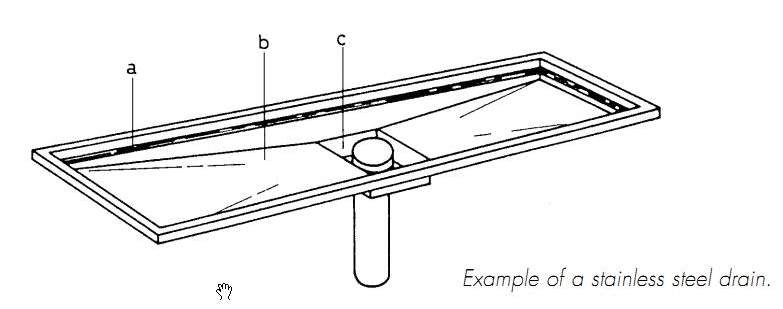| |
| Commercial Kitchen Planning Kitchen Drainage |
| |
Floor Level Grids And Siphons. In various zones of the kitchen
it is
necessary to have floor level grills for:
Spillage during work.
Waste water produced by equipment.
The water used to clean the floor and appliances.
|
The best drainage grids in use consist of a stainless steel
basin complete
with:
a) a containment border for modular grids;
b) a sloping base to channel the water;
c) a collection trough allowing the water to drain away
via a siphon |
 |
Floor level grids are recommended in all those places where
the possible
spillage of water or liquids occurs, to avoid the danger of
slipping.
As an alternative to the usage of pre-manufactured basins,
modular floor
level grids can be made by creating a drainage channel with
a sloping
bottom and one or more drain siphons.
Obviously, the floor grids are sized and structured according
to the needs
of the each kitchen. All kitchen drains must be fitted with
siphons. The pip
ing and the various special pieces that make up the drainage
system can
be installed in the ceiling of the rooms beneath the kitchen
or in the floor
itself. |
Appliances must be linked to the drainage network via siphons
(to avoid
the return of odours). Appliances, whose chambers or wells
are used for
food products, must drain via a stand pipe to avoid a backflow
from the
drainage network.
The drainage network, to be in line with current regulations,
should convey the
waste water to a system for primary treatment. The size and
structure of this sys
tem (the removal of fats) should be analysed from time to
time to make sure it is
still appropriate for the needs (for the concentration of
fats) of the kitchen, the
space available linked to the frequency of maintenance and
the characteristics
of the kitchen (type of cooking). |
| |
| |
| Back
to Hvac App. Commercial Kitchen Main Page |
| Back to Hvac Expert Main
Page |

